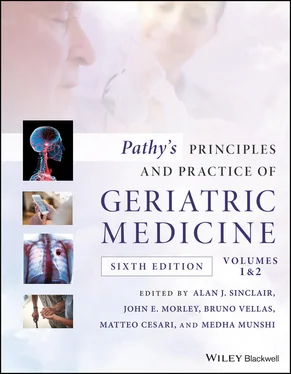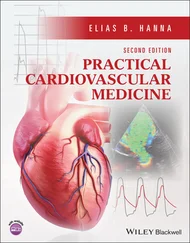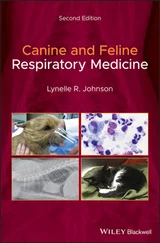Pathy's Principles and Practice of Geriatric Medicine
Здесь есть возможность читать онлайн «Pathy's Principles and Practice of Geriatric Medicine» — ознакомительный отрывок электронной книги совершенно бесплатно, а после прочтения отрывка купить полную версию. В некоторых случаях можно слушать аудио, скачать через торрент в формате fb2 и присутствует краткое содержание. Жанр: unrecognised, на английском языке. Описание произведения, (предисловие) а так же отзывы посетителей доступны на портале библиотеки ЛибКат.
- Название:Pathy's Principles and Practice of Geriatric Medicine
- Автор:
- Жанр:
- Год:неизвестен
- ISBN:нет данных
- Рейтинг книги:3 / 5. Голосов: 1
-
Избранное:Добавить в избранное
- Отзывы:
-
Ваша оценка:
- 60
- 1
- 2
- 3
- 4
- 5
Pathy's Principles and Practice of Geriatric Medicine: краткое содержание, описание и аннотация
Предлагаем к чтению аннотацию, описание, краткое содержание или предисловие (зависит от того, что написал сам автор книги «Pathy's Principles and Practice of Geriatric Medicine»). Если вы не нашли необходимую информацию о книге — напишите в комментариях, мы постараемся отыскать её.
Pathy’s Principles and Practice of Geriatric Medicine
Pathy's Principles and Practice of Geriatric Medicine — читать онлайн ознакомительный отрывок
Ниже представлен текст книги, разбитый по страницам. Система сохранения места последней прочитанной страницы, позволяет с удобством читать онлайн бесплатно книгу «Pathy's Principles and Practice of Geriatric Medicine», без необходимости каждый раз заново искать на чём Вы остановились. Поставьте закладку, и сможете в любой момент перейти на страницу, на которой закончили чтение.
Интервал:
Закладка:
Thrombotic disorders
Although arterial thrombosis is a major cause of morbidity and mortality, its prevention is not possible at present; likewise, its pathophysiology is not well characterized. Smoking, hyperlipidaemia, and a raised fibrinogen concentration are associated with accelerated atheroma, which accounts for the majority of arterial disease (see Chapter 36). In addition, atrial fibrillation (see Chapter 29) and valvular cardiac defects are associated with arterial embolization, but a full understanding of arterial thrombosis does not exist at present. 15
The situation with venous thrombosis is somewhat different, and there have been rapid advances in the understanding, diagnosis and management of venous thrombosis (see Chapter 37) over the last few years. Venous thrombosis is primarily a disease of old age; until recently, it was thought that in the majority of cases the cause was circumstantial, with predisposing factors being immobilization and surgery, particularly to the hip, knee and pelvis, together with accessory factors such as obesity and malignancy. However, it has become clear that in up to 50% of cases of venous thrombosis, an additional underlying genetic predisposition to thrombosis becomes manifest under the above circumstances. The importance of thromboembolic prophylaxis of both surgical and medical patients at medium and high risk of developing thrombosis is increasingly recognized and practised. Likewise, the need for objective diagnosis of venous thrombosis by ultrasound examination or venography in the lower limb, and ventilation–perfusion lung scanning and pulmonary angiography in cases of suspected pulmonary embolus, has become established. Objective validation of the diagnosis of venous thromboembolic disease should always precede the initiation of treatment. Treatment should be initially with either unfractionated or low‐molecular‐weight heparin and subsequently with oral warfarin. Warfarin in the elderly is not without hazards, there being an increased chance of drug interactions; and in general, the dose required in elderly patients is somewhat lower than in younger patients. Furthermore, the risk of bleeding is increased at both high and normal INRs because of the increased incidence of underlying pathology, such as peptic ulcer, gastrointestinal malignancy, and angiodysplasia. Consequently, it is important that recommended target ranges and duration of anticoagulation are adhered to and that patients are not anticoagulated without good cause ( Table 24.5). 16
Thrombophilia
The proteins of the natural anticoagulant pathway act to limit and regulate thrombin generation ( Figure 24.2). Deficiency of these proteins results in increased thrombin generation and consequently increased fibrin formation and venous thrombosis ( Table 24.6). Deficiencies of antithrombin, protein C, and protein S are rare, but significant conditions do exist. They are autosomally dominantly inherited and only occur in the heterozygous form, the homozygous form being incompatible with life. These conditions usually present with venous thrombosis, which may be unusually widespread or occur at an unusual site, sometimes occurring spontaneously but often following a recognized predisposing factor. They may be recurrent, and there is often a positive family history of venous thrombosis. Although patients may present at a younger age, they can be diagnosed at any age, and certainly second or recurrent episodes of thrombosis will occur in old age. The diagnosis of these conditions can be somewhat problematic as the concentrations of all these proteins fall during active thrombosis, and antithrombin levels fall during heparin therapy, while protein C and S levels fall during warfarin therapy.
Table 24.5 INR ranges in various conditions.
| INR | Clinical state |
|---|---|
| 2.0–3.0 | Treatment of deep vein thrombosis Pulmonary embolism Systemic embolism Prevention of venous thromboembolism in myocardial infarction Mitral stenosis with embolism Transient ischaemic attacks Atrial fibrillation |
| 3.0–4.5 | Recurrent deep vein thrombosis and pulmonary embolism Arterial disease, including myocardial infarction Mechanical prosthetic heart valves |
Table 24.6 Thrombophilic conditions.
| Antithrombin – quantitative deficiency (type 1) or qualitative dysfunction (type 2) |
| Protein C – quantitative deficiency or qualitative dysfunction |
| Protein S – deficiency of total or free protein S |
| Factor V Leiden |
| Prothrombin 20210A allele |
| Antiphospholipid syndrome (lupus anticoagulant, anti‐beta 2 glycoprotein 1 Ab, ACA Ab) |
Consequently, patients should ideally be investigated when they neither have active thrombosis nor are on anticoagulants. The finding of a deficiency state should lead to family screening as other family members are at risk. In the absence of a first episode of thrombosis, management should consist of adequate thromboprophylaxis at times of increased risk, such as surgery and immobilization. After a first episode of thrombosis, reasonable management is to anticoagulate for three to six months with warfarin with a target range of 2–3 or a DOAC; after recurrent thrombosis, lifelong anticoagulation should be considered, initially with a target range of 2–3 but increasing to 3–4 should further episodes of thrombosis occur while patients are already anticoagulated. 17Patients with triple‐positive APS should not receive a DOAC and be anticoagulated with warfarin at the higher target range.
Factor V Leiden is the most common inherited prothrombotic genetic disorder. The basis of this defect is a single base substitution at position 1691 of the factor V heavy chain, resulting in a substitution of the amino acid glutamine for an arginine residue. This abolishes an activated protein C cleavage site and results in a factor V molecule that can be activated by thrombin but can no longer be inactivated by APCR; consequently, there is enhanced and prolonged activation of the coagulation cascade, increased thrombin generation, and hence a predisposition to thrombosis. This condition can therefore be diagnosed both by a plasma assay and by genetic analysis of the factor V gene. The condition is autosomally dominantly inherited and is extremely common, occurring at an incidence of between 2 and 10% in the Caucasian population, although it appears to be rare or absent in non‐Caucasian populations. Unlike the other thrombophilic conditions, individuals with both heterozygous and homozygous forms of this condition exist, and the lifelong incidence of thrombosis appears to be somewhat less than antithrombin, protein C, and S deficiency. Indeed, a significant proportion of patients with this condition may never have a thrombotic event. The frequency with which it occurs within the Caucasian population suggests that in evolutionary terms, it must have some as yet obscure evolutionary advantage, but with life expectancy increasing and surgery becoming more frequent nowadays, it is clear that this condition is a major predisposing factor contributing to venous thrombosis. Indeed, between 40 and 60% of patients having a first episode of thrombosis have this condition, a 12‐fold increase over the incidence within the background population.
Prothrombin 20210A allele is another genetic condition common in Caucasian populations at an incidence of 1–5% that increases thrombotic risk to a similar degree to Factor V Leiden. Again most patients do not have thrombosis, and population and family screening for Factor V Leiden and PT20210A is now no longer recommended.
Lupus anticoagulant
Lupus anticoagulant is a laboratory diagnosis based on the finding of a prolonged APTT that is not due to a deficiency of a specific coagulation factor or a specific inhibitor of any coagulation factor, but to an autoantibody apparently directed against phospholipids but in reality directed primarily against proteins that are intimately associated with phospholipids. Since the reactions of the coagulation cascade are phospholipid dependent, these antiphospholipid antibodies decrease the efficiency of the coagulation cascade and prolong the clotting time. The diagnosis can be confirmed using the dilute Russell viper venom test (DRVVT), in which the test is optimized so that phospholipid availability is rate‐limiting; this accentuates the effect of antiphospholipid antibody. Confirmation is achieved by showing that the clotting time returns to normal when excess phospholipid (in the form of freeze‐fractured platelets) is added to quench the antibodies and that the test is not corrected by the addition of normal plasma that contains only additional coagulation factors.
Читать дальшеИнтервал:
Закладка:
Похожие книги на «Pathy's Principles and Practice of Geriatric Medicine»
Представляем Вашему вниманию похожие книги на «Pathy's Principles and Practice of Geriatric Medicine» списком для выбора. Мы отобрали схожую по названию и смыслу литературу в надежде предоставить читателям больше вариантов отыскать новые, интересные, ещё непрочитанные произведения.
Обсуждение, отзывы о книге «Pathy's Principles and Practice of Geriatric Medicine» и просто собственные мнения читателей. Оставьте ваши комментарии, напишите, что Вы думаете о произведении, его смысле или главных героях. Укажите что конкретно понравилось, а что нет, и почему Вы так считаете.












